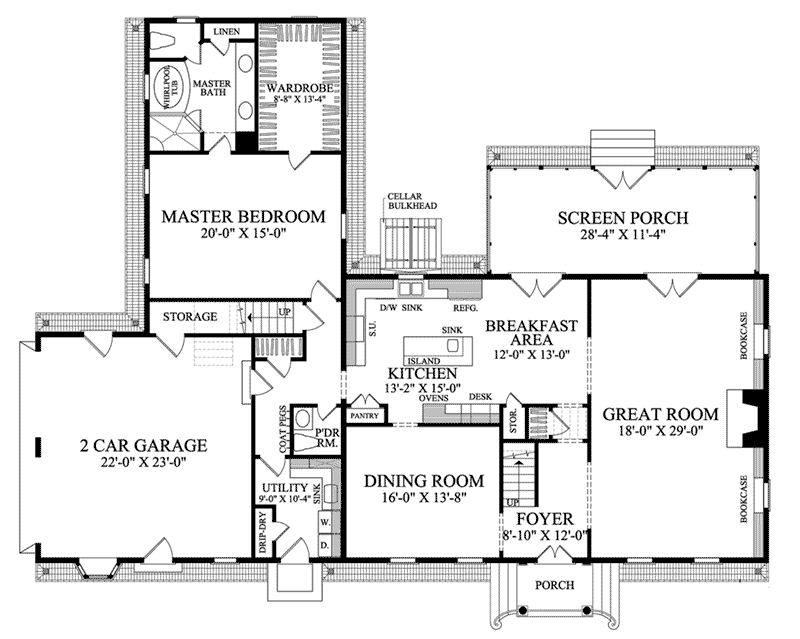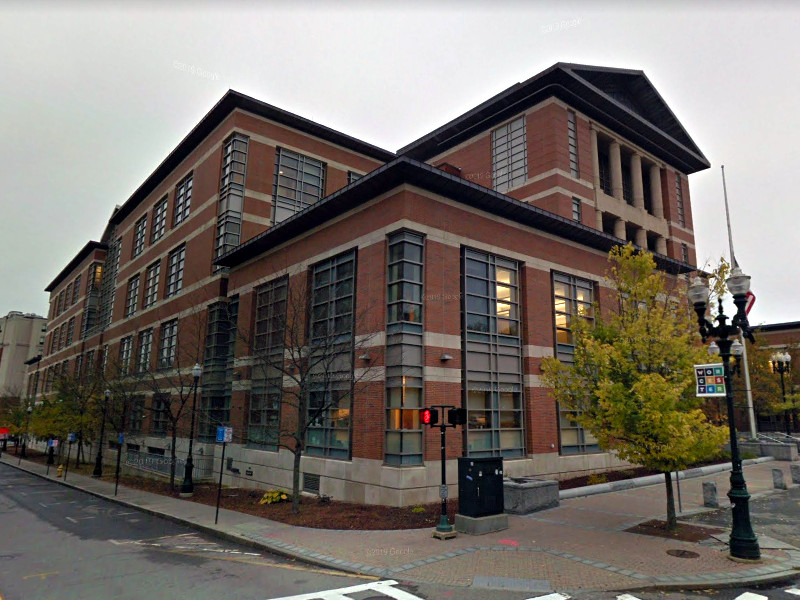Table Of Content
- Hidden Bookshelf Passageway Reveals Disturbing Nazi Collection in Argentina
- The Nazis Tried and Failed to Build the World’s Largest Stadium
- Hitler's Secret Argentine Sanctuary Is for Sale, Say Conspiracy Theorists
- Hollyhock House
- Argentine archaeologists probe 'Nazi hide-out' for clues
- Trips
- Hiking the Disturbing Remains of a California Hideout for Hitler
By the time victorious Red Army troops entered the bunker, Hitler was on board the last Luftwaffe plane to fly out of Europe, heading south on the long journey that would eventually take him to Argentina. While police in Argentina did not name any high-ranking Nazis to whom the objects might have originally belonged, Bullrich noted there were medical devices. Since being discovered, the artifacts have been put on display at the Delegation of Argentine Israelites Associations, in Buenos Aires. Like Berghof, the Inalco house could only have been observed from the lake—a forest on the back limited the view from land. The plans are similar to the architecture of Hitler's refuge in the Alps, with bedrooms connected by bathrooms and walk-in closets and a tea house located by a small farm. This is the house were Hitler spent the last years of his life, a remote mansion similar to the infamous Berghof located in the Nahuel Huapi Lake, in Patagonia, Argentina, a remote mountainous paradise full of Nazi refugees.
Property buyers wary in Bariloche, 'Argentina's Aspen' - Financial Times
Property buyers wary in Bariloche, 'Argentina's Aspen'.
Posted: Fri, 31 Jan 2020 08:00:00 GMT [source]
Hidden Bookshelf Passageway Reveals Disturbing Nazi Collection in Argentina
This lake harbors several introduced, non-native species of trout,[6] including rainbow trout, brown trout and brook trout which attract anglers from the world over. The lake's crystal clear waters are very susceptible to climate changes and have an average surface temperature of 7 °C (45 °F); this makes it both beautiful and treacherous. Kayaking is a popular sport on this and adjacent lakes.The lake is also the starting point of the Limay River. We know that many of you worry about the environmental impact of travel and are looking for ways of expanding horizons in ways that do minimal harm - and may even bring benefits. We are committed to go as far as possible in curating our trips with care for the planet. That is why all of our trips are flightless in destination, fully carbon offset - and we have ambitious plans to be net zero in the very near future.
The Nazis Tried and Failed to Build the World’s Largest Stadium
Column: Nazism and maybe Hitler survived WWII • Current Publishing - Current in Carmel
Column: Nazism and maybe Hitler survived WWII • Current Publishing.
Posted: Sun, 21 Oct 2018 07:00:00 GMT [source]
As leading members of Hitler’s Third Reich were put on trial for war crimes, Josef Mengele fled to Argentina and lived in Buenos Aires for a decade. He moved to Paraguay after Israeli Mossad agents captured Holocaust mastermind Adolf Eichmann, who was also living in Buenos Aires. Mengele later died in Brazil in 1979 while swimming in a beach in the town of Bertioga. Agents with the international police force Interpol began following the collector and with a judicial order raided the house on June 8.
Hitler's Secret Argentine Sanctuary Is for Sale, Say Conspiracy Theorists
While the claims have received some exposure in popular culture, they are regarded by historians and scientific experts as disproven fringe theories. Eyewitnesses and Hitler's dental remains demonstrate that he died in his Berlin bunker in 1945. Later, Merou sold the house to Jorge Antonio, who was connected to the President Perón and was the German representative of Mercedes Benz in the south american country.
Hollyhock House
The residents of Murphy Ranch survived for nearly a decade by growing their own food in a concrete-walled garden, now exposed to the elements but probably once covered by a greenhouse roof. But there are signs as to how they survived, including giant tanks and cisterns that held enough diesel fuel and water to help them sustain life in isolation for up to three years without supplies from the outside world. Adolf Eichmann, the SS officer who oversaw the logistics of the Holocaust, famously lived in a suburb of Buenos Aires for years before being captured by Israeli agents. The overgrown ruins are located in Teyu Cuare park, near the town of San Ignacio in northern Misiones province.

He said that a number of objects had been found that linked the buildings to wartime Germany, such as coins minted in the late 1930s and early 1940s and a fragment of Meissen porcelain made in Germany. Researchers from the University of Buenos Aires have discovered artifacts linking the remains of three buildings in the Andean jungles of a provincial park in Teyu Cuare to Nazi leaders, the Washington Post reports. Inside the hideout, they found German coins minted during the Nazi era, a fragment of a German porcelain plate and even a swastika etched into the structures.
In the kismet-filled conversation that followed, Buck agreed to buy the barren one-eighth-acre lot for $13,500, with $100 down and the seller maintaining the mortgage until the Stahls paid it off. On that site, they would construct Case Study House #22, designed by Pierre Koenig, arguably the most famous of all the houses in the famous Case Study program that Arts & Architecture magazine initiated in 1945. For generations of pilgrims, gawkers, architecture students, and midcentury-modern aficionados, it would be known simply as the Stahl House.
Argentina did, of course, give refuge to some of the worst Nazi criminals, including Auschwitz doctor Josef Mengele and Adolf Eichmann, one of the main architects of the Holocaust. Her work has appeared in publications like The Washington Post, TIME, mental_floss, Popular Science and JSTOR Daily. Ariel Cohen Sabban, president of the DAIA, a political umbrella for Argentina’s Jewish institutes, called the find “unheard of” in Argentina.
Of course, it helped that Juan Peron had an established relationship with Hitler and organised escape routes, called ratlines, for the Nazis via Spain and Italy. Even today Argentina has notoriously porous borders, and many expats live in Argentina on three-month tourist visas, as was the case for the Nazis who came to hide out here in the 1940s. Some were even granted residency, and many went on to actually serve in the Argentine army. Researcher Daniel Schavelzon told Argentina's Clarin newspaper that the architecture of the three buildings differed markedly from that of others in the region and that their purpose in the middle of a remote nature reserve was a mystery.
The researcher insisted, though, that the buildings in Teyu Cuare park were very unusual. The researchers from the University of Buenos Aires said they decided to investigate the buildings because of a local legend claiming they had been used as a hide-out for Martin Bormann, a close aide to Adolf Hitler. The researchers said that the buildings were probably never used by fugitive Nazis, because they found they could live freely in Argentine towns. And the discovery of second world war-era German coins in Misiones seems less surprising when you consider that Argentina has long been a destination for European immigrants, and that the country’s population includes about 3 million people of German descent. The idea that Hitler’s deputy somehow escaped to Argentina is an integral part of the Nazis-in-South-America myth, and a key element of Ira Levin’s novel The Boys from Brazil and the 1978 movie of the same name. The idea that senior Nazis escaped the collapse of the Third Reich to live out their days in the sweltering jungle of South America has long been a staple of fiction and “counterfactual” alternative histories.
It had a total of nearly 80 rooms, large windows, a small interior court, and a grand staircase. In the days of the hotel's primacy the courtyard featured a fountain[7] and an aviary of exotic birds.[8] The structure forms three sides of a trapezoid whose open end immediately abuts the adjacent Merced Theatre, thus forming the courtyard. The back of the hotel faces Sanchez Street,[9] where the large gate used by supply wagons and other large vehicles can still be seen. Like many houses designed by Wright, Hollyhock House proved to be better as an aesthetic work than as a livable dwelling. Water tended to flow over the central lawn and into the living room, and the flat roof terraces were conceived without an understanding of Los Angeles's rains. So when World War II ended and Nazis were deemed war criminals, this area of Patagonia, both in Argentina and Chile, was an obvious choice.
After the fall of the Third Reich, South American countries like Argentina became a safe haven for Nazis seeking to escape prosecution. Christopher Klein of History.com writes that Juan Perón, the fascist-leaning Argentine president, established escape routes to smuggle Nazi party members out of Europe. Among the more notorious Nazis to flee to Argentina were Josef Mengele and Adolf Eichmann. The items belong to a collector who has not been arrested, but who is under investigation, according to Kate Samuelson of TIME. Authorities are not entirely sure when or how the collection was brought into the country, but they suspect the objects once belonged to one or more high-ranking Nazis.
Hollyhock House features an entertainment room immediately to the right of the entrance. This room contains possibly the first built-in entertainment center, complete with LP-sized cabinets along the floor. Other notable rooms include a child's play area as well as a modernist kitchen, which long housed the museum gift shop. An interesting feature is the mitered glass corners at the windows; an early idea Wright later used at Fallingwater. Members of the Buenos Aires Zoo visited the lake in 1922 trying to corroborate the reports of sightings of the prehistoric animal, but found no evidence to support the theory of such a creature.
A large bookshelf caught their attention and behind it agents found a hidden passageway to a room filled with Nazi imagery. Police say one of the most-compelling pieces of evidence of the historical importance of the find is a photo negative of Hitler holding a magnifying glass similar to those found in the boxes. Investigators have not come to a conclusion about the origin of these artifacts, and experts on Nazi loot are divided about how, exactly, these items may have made their way to Argentina. As World War II came to a close, some Nazis fled to other countries using “ratlines,” underground networks for fugitive Nazis. Wanted Nazi war criminals fled to several countries in South America, including Argentina, to avoid answering for their crimes in Germany. He bought the lot from architect Alejandro Bustillo, who created the original plans of the house in March 1943.












